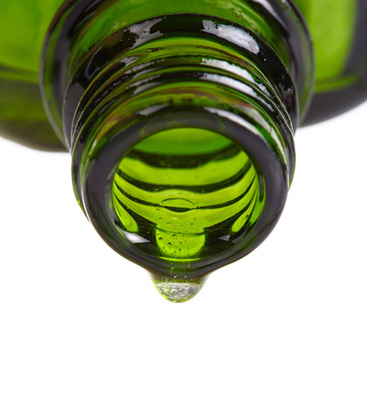 This page will be in a constant state of construction; here's what we have "put to paper" so far. If you have specific questions, just ask.
This page will be in a constant state of construction; here's what we have "put to paper" so far. If you have specific questions, just ask. We choose certified organic and fair trade ingredients whenever possible. Other organic ingredients come from our own garden.
All material provided on this website is provided for informational or educational purposes only, and is not intended as a substitute for the advice provided by your healthcare professional or physician.
A B C D E F G H I J K L M N O P Q R S T U V W X Y Z
Aloe Vera (Aloe barbadensis)
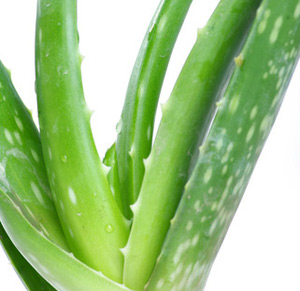 What it does: Aloe is healing and moisturizing. It encourages good circulation and rejuvenates aging skin. It's also used for abrasions and burns. It is known to have anti-inflammatory, antibacterial, and antiviral properties. We use it in our Aloe & Shea Moisturizing Lotion, Moisturizing Gel, and Sunburn Relief spray.
What it does: Aloe is healing and moisturizing. It encourages good circulation and rejuvenates aging skin. It's also used for abrasions and burns. It is known to have anti-inflammatory, antibacterial, and antiviral properties. We use it in our Aloe & Shea Moisturizing Lotion, Moisturizing Gel, and Sunburn Relief spray.What's in it: Protein, calcium, germanium, magnesium, selenium, zinc, vitamins A, B12, C and E, essential fatty acids, amino acids, and enzymes. We use certified organic only.
Antioxidants
What it does: Antioxidants are vitamins, minerals and enzymes that may help prevent and repair damage to your body's tissue. Antioxidants do this by slowing or preventing the effect of free radicals. Free radicals start oxidation -- a process that causes damage to cells (similar to a peeled apple or pear turning brown). Antioxidants themselves are oxidized in the process of their work, so they need to be replenished.There is quite a lot of controversy about whether or not antioxidants are anti-aging, or otherwise helpful to the skin. We do know that herbs are helpful to the skin and many contain antioxidants.
What's in it: In this case, we mean what are they in! Antioxidants are abundant in herbs and other botanicals. Just a few of the ingredients we use that contain antioxidants include: parsley, comfrey, clove, frankincense, ginger, sage, lemon, rosemary, thyme, vetiver, green tea, evening primrose oil, lecithin, citric acid, lemon balm, peppermint, and rosehips.
If you see that an ingredient contains any of the following, it contains antioxidants: allantoin, anthocyanins, beta-carotene/carotenoids/vitamin A, catechins, flavonoids, leucoanthocyanins, lipoic acid, lutein, lycopene, oligomeric proanthocyanidins/OPCs, polyphenols, selenium, tocopherols/Vitamin E, and Vitamin C.
We believe that all of these substances work best in the context of the entire plant material, taking advantage of synergy with the many other components of the plant. Synthesized or separated versions don't have the advantages of synergy and may cause unexpected negative side effects.
Apple Cider Vinegar (Acetic acid)
We use organic apple cider vinegar which is unfiltered, unpasteurized, unrefined, and unprocessed. It can be cloudy and to some, less attractive-looking. In this vinegar you might see a tiny formation of "cobweb-like" substances called the "mother" (because they are the basis or "starter" of the vinegar).Formation of the "mother" is a natural, good sign of healthy vinegar. While not appetizing in appearance, the vinegar does not have to be discarded because of it. The "mother" can be filtered out using a coffee filter, used to start a new bottle of vinegar, or simply left in and ignored.
Processing makes vinegar look pretty, but removes most of its beneficial qualities. We have decided for the time being to continue to choose based on benefits rather than looks.
Arnica (Arnica montana) aka leopard's bane
What it does: Arnica reduces the impact of bumps and bruises, and helps heal joint and muscle strain. When applied promptly, it helps prevent bruising by stopping capillaries from bleeding. It is anti-bacterial and anti-inflammatory which are the characteristics that help reduce pain and swelling and improve wound healing. We use arnica infused oil in our Hand Cream, Backache Oil, and Stiff Neck & Shoulder Rub.What's in it: Arnicin, tannin and phulin. We use certified organic only.

Basil (Ocimum basilicum)
What it does: Breathing in the scent of basil essential oil helps stimulate, clear and focus the mind. It is an energizing oil and can aid alertness. The oil is also antiseptic, antidepressant, anti-inflammatory and insect repellant.What's in it: Basil essential oil constituents include linalool, methyl chavicol, eugenol, limonene and citronellol. We use certified organic only.
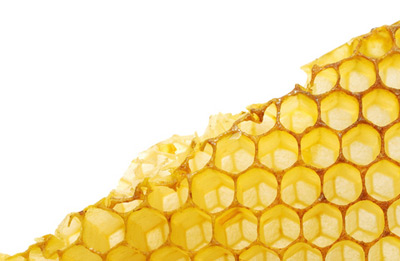
Beeswax (Apis mellifera)
What it does: Holds ingredients together and keeps them in a more solid state.What's in it:
Bergamot (Citrus bergamia)
What it does: Inhaled, it relaxes the nervous system and helps improve digestion. It can be inhaled for anxiety, stress, tension, fear, hysteria and depression, as well as for respiratory tract infections. It is used topically for skin problems. Its antiseptic properties make it ideal for treating wounds, herpes, acne and oily skin conditions, as well as psoriasis, eczema and general healing. Also antifungal.What's in it: Contains vitamins A and C, and thymol. We use certified organic only.

Burdock (Arctium lappa)
What it does: Burdock root is used to alleviate skin problems including eczema and psoriasis. It is antibacterial, antifungal, astringent, and soothing to the skin. It tones the skin, accelerates healing and reduces the chances of future irritation. We use it in our hair care products because it reduces scalp irritation, controls sebum, combats dandruff and promotes healthy hair growth. In general burdock root is detoxifying and boosts the immune system.What's in it: Rich in vitamin C, iron, inulin, and magnesium. High in silicon, chromium, potassium and B1. Moderate amounts of calcium, selenium, manganese, protein, vitamins A and P. We use certified organic only.
Calendula (Calendula officinalis)
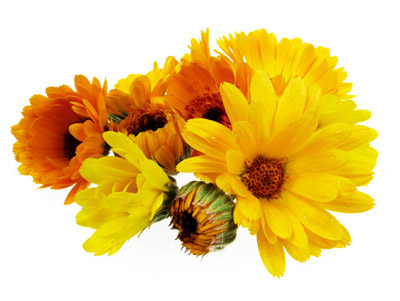 What it does: Alleviates reddened and inflamed skin. Calendula helps detoxify the body, and therefore helps treat systemic skin disorders, including chronic problems such as eczema and acne. It is also used to treat broken capillaries. It has both antiseptic and antifungal properties. Calendula decreases inflammation and swelling; soothes burns rashes and skin irritations. Laboratory studies show it kills bacteria and fungus and is even antispasmodic.
What it does: Alleviates reddened and inflamed skin. Calendula helps detoxify the body, and therefore helps treat systemic skin disorders, including chronic problems such as eczema and acne. It is also used to treat broken capillaries. It has both antiseptic and antifungal properties. Calendula decreases inflammation and swelling; soothes burns rashes and skin irritations. Laboratory studies show it kills bacteria and fungus and is even antispasmodic.What's in it: Vitamins A, C and phosphorous. We use certified organic or grown in our own gardens without the use of chemicals.
Carrot Seed Oil (Daucus carota)
What it does: Carrot seed oil is considered to be both revitalizing and toning for the skin, helps improve mature complexions and reduce wrinkles. It has antiseptic properties which make it a good anti-acne ingredient. Its healing properties make it effective for both dry and oily skin and a healthy scalp, and it's used to treat dermatitis, including eczema and psoriasis. It also helps improve circulation, release toxins and is a smooth muscle relaxant.What's in it: Carrot seed essential oil is actually steam distilled from the seeds of the plant/weed we know as Queen Anne's Lace. It is wildcrafted (therefore not organic) but good sources will not gather the "side of the road" plants. (We have good sources.) It contains vitamins A (beta carotene), C, B1 and B2.
Castor Oil (Ricinus communis)
What it does: Castor oil is a healing therapeutic oil. It is thick and shiny and protects against harsh environmental conditions, making it excellent for lip balm and hair products. It's ricinoleic acid can help keep fungus or bacteria from inhibiting hair growth. It is deeply penetrating, more so than other oils, helping to better deliver it's own nourishment and that of other ingredients, into the skin and hair follicles.What's in it: Castor oil is high in ricinoleic acid, a natural anti-bacterial and anti-fungal agent. It is also high in omega 9 fatty acids, that are nourishing to skin and hair. We use certified organic only.
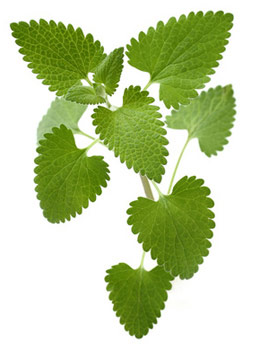
Catnip (Nepeta cataria)
What it does: For people it is mildly sedative, though it makes cats crazy. Also antispasmodic. We use it in dream pillows for its calming effect, in hair rinse for the silicon, and in the catnip toys for the happiness of cats, but it can also be used in other ways. Catnip tea is used for calming the nerves and digestive system and as a general tonic to balance the body.What's in it: Iron, selenium, potassium, manganese, vitamins A and C. Lesser amounts of magnesium, phosphorous, calcium, silicon, and B complex. We use certified organic only.

Cedarwood (Cedrus atlantica)
What it does: We use cedar essential oil in Herbaliz Shampoo to combat greasy hair, encourage hair growth and reduce hair loss. It is antioxidant, antiseptic, astringent, regenerative, and a circulatory stimulant, all of which is good for scalp health. Other things that cedar can do is combat acne, discourage dandruff, dermatitis, eczema, and fungal infections. Positive side effects of breathing in the scent of cedar are that it calms the spirit and eases nervous tension and anxiety. That's why we use it in Tranquility Aroma Blend and Linen Spray.What's in it: Cedar contains sesquiterpenes (antioxidants), atlantone, caryophyllene, cedrol, cadinene. We use steam distilled cedar essential oil, and will choose certified organic when we can. Woods are less likely to be certified organic since it takes a good while to grow a tree!
Chamomile, Roman (Anthemis nobilis)
What it does: Calming (to the nerves, digestion and skin), mildly sedative, anti-inflammatory and antispasmodic.What's in it:

Citric Acid
What it does: Cosmetic manufacturers use citric acid to adjust the acidity of a product to avoid skin irritation (aka "balance the pH"). We use it for the same reason. It is also a natural preservative.
What's in it: Citric acid is a weak organic acid. It is made from plants (usually corn and/or molasses these days) and is an alpha hydroxy acid. It is generally recognized as safe (GRAS), and not at all toxic in the tiny amounts we use. EWG analysis shows people are exposed to far more citric acid from a piece of fruit or glass of juice than from cosmetics.
That said, there are still some folks who may have a reaction to it. It is not clear whether it is an allergy (like some people have to strawberries), or an intolerance due to too much exposure. With this in mind we are seeking alternatives and will update you the moment we have been successful.
Clary Sage (Salvia sclarea)
 What it does: Clary sage essential oil is great for both skin and hair. We use it in our dandruff shampoo for its ability to reduce dandruff and oily scalp. In our Skin Balancing variety of moisturizers clary sage fights both wrinkles and acne or any kind of inflammation. Clary sage also impacts the nervous system, relieving tension and anxiety. How nice to lose both dandruff and anxiety at the same time! Some of its actions: antibacterial, antidepressant, astringent, antiseptic, tonic and deodorant.
What it does: Clary sage essential oil is great for both skin and hair. We use it in our dandruff shampoo for its ability to reduce dandruff and oily scalp. In our Skin Balancing variety of moisturizers clary sage fights both wrinkles and acne or any kind of inflammation. Clary sage also impacts the nervous system, relieving tension and anxiety. How nice to lose both dandruff and anxiety at the same time! Some of its actions: antibacterial, antidepressant, astringent, antiseptic, tonic and deodorant. What's in it: Clary sage essential oil contains esters (healing and calming), sesquiterpenes (antioxidants) and alcohols (not related to the familiar kind; these are gentle, balancing constituents of essential oils) . We use steam distilled, wildcrafted, clary sage essential oil.
Coconut Oil (Cocos Nucifera)
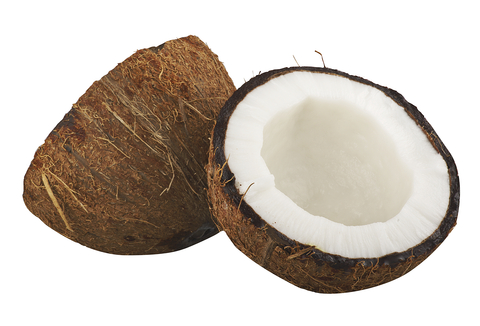 What it does: It softens and moisturizes skin, and is calming to sensitive skin. It remains on the surface of the skin for a while, giving a nice slip to lotions and creams and causing a smoothing effect on skin. It holds essential oils well. Coconut oil can be drying for some people. We use a small amount in our Moisturizing Lotion and Aloe & Shea Moisturizing Lotion.
What it does: It softens and moisturizes skin, and is calming to sensitive skin. It remains on the surface of the skin for a while, giving a nice slip to lotions and creams and causing a smoothing effect on skin. It holds essential oils well. Coconut oil can be drying for some people. We use a small amount in our Moisturizing Lotion and Aloe & Shea Moisturizing Lotion. What's in it: We use non GMO, extra virgin certified organic, fair trade coconut oil.
Comfrey (Symphytum officinale) aka "knitbone"
 What it does: Comfrey reduces inflammation, and is an anti-irritant that alleviates rashes. It helps exfoliate old and damaged cells while encouraging new skin cells to grow and remain healthy. The allantoin in comfrey helps improve skin's ability to retain moisture, providing a smoothing effect. Comfrey is also antibacterial and speeds wound healing. It got its other name "knitbone" because it promotes growth of connective tissue, cartilage and bone.
What it does: Comfrey reduces inflammation, and is an anti-irritant that alleviates rashes. It helps exfoliate old and damaged cells while encouraging new skin cells to grow and remain healthy. The allantoin in comfrey helps improve skin's ability to retain moisture, providing a smoothing effect. Comfrey is also antibacterial and speeds wound healing. It got its other name "knitbone" because it promotes growth of connective tissue, cartilage and bone.What's in it: The main healing ingredient in comfrey leaf is allantoin, which gently encourages new cells to grow. Comfrey is rich in antioxidants, vitamin A, C, calcium and trace minerals. It contains 18 amino acids, tannin, rosmarinic acid, mucilage, steroidal saponins, inulin, carotene, vitamin B1, B2, B12, E, protein, and zinc.
There is some concern about the use of comfrey because it also contains pyrrolizidine alkaloids which can be harmful when taken internally over long periods of time. We use comfrey leaves in our infused oil, which contain much less of the alkaloid than the roots. We infuse the leaves in oil, not water, so it is only the oil based constituents that make it into the cream. Alkaloids are only one of many constituents of the plant and are not very oil soluble. We use certified organic and comfrey grown in our own gardens without the use of chemicals.
The following is a link you can copy and paste, to an article that tells you what the government thinks based on actual studies: https://www.ncbi.nlm.nih.gov/pmc/articles/PMC3491633/

Cypress (Cupressus sempervirens)
What it does: Applied topically cypress essential oil can help improve circulation, reduce localized swelling and muscle spasms (anti-inflammatory, antispasmodic). It is active against oily skin (astringent, antibacterial), which is why we use it in the Moisturizing Gel. It can help calm nervous tension, alleviating stress related conditions (sedative, tonic), and has detoxifying effects on the body as a whole.What's in it:
Decyl polyglucose
What it does: Makes suds.What's in it: Decyl polyglucose is manufactured from corn and coconut and palm kernel oils. It can also be described as being made from corn, glucose and starch. Corn supplies the carbohydrates which are converted with fatty alcohols from the oils, into alkyl polyglycosides. Yeah, I don't understand that either. What I do know is that decyl polyglucose is an effective gentle cleaner with no reported adverse effects and is fully biodegradable. Because it is manufactured, it can't be considered natural. It is the mildest, safest material we know of for making the suds we demand in our shampoos and cleansers. It won't make the mountains of suds we've grown used to, but it will make enough, without negative side effects. 2019: The manufacturer has been reducing the amount of palm kernel oil, replacing it with other vegetable oils. The decyl polyglucose now has a slight sweet odor. It remains gentle, safe, and biodegradable.

Elder (Sambucus canadensis)
What it does: Elder flowers, and berries are used for arthritis, colds, skin problems such as eczema and psoriasis and inflammations. The plant boosts the immune system, is antiviral and astringent. We use the flower in our bath soaks and bath teas for softer skin. What a nice way to improve your immune function and soften your skin at the same time!What's in it: Contains vitamin C, vitamin A and bioflavonoids. We use certified organic dried flowers.
Evening Primrose Oil (Oenothera biennis)
What it does: Has anti-inflammatory and anti-oxidant effects. Is used for rheumatoid arthritis and as a balancer for the female system. Good for joints, hair and skin for both men and women.What's in it: Evening Primrose Seed Oil is a rich source of gamma linoleic acid (high GLA content), an Omega 6 fatty acid. Essential Fatty Acids cannot be produced by our own bodies, and instead must be obtained from dietary sources. We use certified organic only.
Fennel (Foeniculum vulgare)
 What it does: blood purifier, removes waste material from the body. We use it in our cleansing grains.
What it does: blood purifier, removes waste material from the body. We use it in our cleansing grains. What's in it: Calcium, magnesium, phosphorous, iron and selenium, vitamins A, C and E, flavonoids.

Frankincense (Boswellia carterii)
What it does: Frankincense is a calming and grounding essential oil that helps reduce anxiety, tension and stress. We use it in our Tranquility Aroma Blend for that purpose. It seems to help slow and deepen one's breathing, which is conducive to meditation as well as helping improve the respiratory system. It is also antiseptic, anti-inflammatory, anti-fungal and healing to worn skin. These characteristics make it a helpful oil in our Fabulous Foot Cream as well as the Healthy Nail Treatment.What's in it: Pinene, limonene phellandrene and other monoterpene hydrocarbons, as well as octyl acetate, octanol, and incensole. It starts as a gum resin from the tree. We use steam distilled essential oil only.
French Green Clay
What it does: French Green Clay has exceptional absorbent powers due to its tiny molecules. It "drinks" oils, toxic substances, and impurities from the skin. The fine particles allow for greater absorption of impurities, dust, oil, contaminants, and make up than other clays. It tones and stimulates the skin, bringing fresh blood to damaged skin cells. Using French Green Clay can help clear problem skin, revitalize the complexion, and tighten pores. We use it in our Herbal Clay Mask .What's in it: French Green Clay contains important elements, including montmorillonite, mineral oxides, magnesium, calcium, potassium, dolomite, silica, manganese, phosphorous, silicon, copper, and selenium. Its green color comes from a combination of iron oxides, and decomposed plant matter.
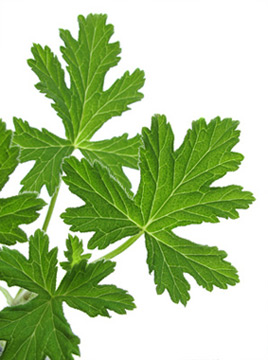
Geranium (Pelargonium graveolens)
What it does: Acne, bruises, broken capillaries, burns, congested skin, cuts, dermatitis, eczema, mature skin, oily complexion,; mosquito repellant; poor circulation, cellulitis; antidepressant, anti-inflammatory, antiseptic-antibacterial, astringent, cicatrizant, deodorant, antifungalWhat's in it: We use certified organic only.
Ginger (Zingiber officinale)
 What it does: Increases circulation, stimulating, fights inflammation. Helps with headaches, arthritis, muscle pain, indigestion.
What it does: Increases circulation, stimulating, fights inflammation. Helps with headaches, arthritis, muscle pain, indigestion.What's in it: Vitamins A, C, B complex, calcium, iron, phosphorus, sodium, potassium and magnesium. We use certified organic only.
Glycerin
What it does: Glycerin attracts moisture and forms a protective layer that helps prevent moisture loss. There appears to be a lot of controversy about this ingredient at the moment, and whether it is drying or moisturizing. Because it absorbs moisture, pure glycerin applied to skin will be very drying. Diluted with water, however, it will soften your skin. So both sides of this controversy appear to be correct. We use it in small amounts and with water. (Glycerin and rosewater was a go-to moisturizer for hundreds of years; women would have stopped using it if it didn?t work.)What's in it: Glycerin is a byproduct of soap making, and can be derived from fats of all kinds. The glycerin in our shampoo is derived from coconut oil, is non-gmo and kosher. The glycerin we use in our other products, as of 4/12/17, is derived from soy and is certified organic. Customers have asked that we look for a certified organic, non-gmo, coconut-derived glycerin and we are working on it. If you know of a reputable source, let us know!
Grapefruit (Citrus x paradisi)
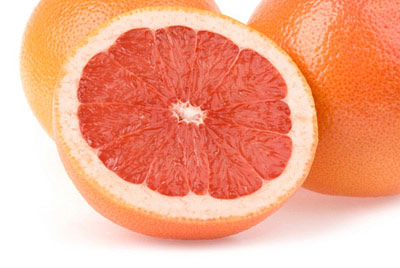 What it does: Grapefruit essential oil (which is pressed from the rind), tones the skin, counteracting congested and oily skin. It acts against germs, viruses, headaches and depression, and can help detoxify the body.
What it does: Grapefruit essential oil (which is pressed from the rind), tones the skin, counteracting congested and oily skin. It acts against germs, viruses, headaches and depression, and can help detoxify the body.What's in it: Grapefruit is exceptionally high in vitamin C. It also contains vitamin A, thiamine, riboflavin, potassium, niacin and iron. Chemical constituents include limonene, cadinene, paradisiol, geraniol, and esters, coumarins and furocoumarins. To us this all means lots of anti-oxidants! We use certified organic only in our Herbal Glycerin Soap and Lip Balm.

Hops (Humulus lupulus)
What it does: Relaxing for the nerves, relieves anxiety, encourages restful sleep, eases headaches. We use it in dream pillows when available. Hops are also known to be skin softening and antimicrobial.What's in it: Potassium, niacin and B complex vitamins. To a lesser extent, phosphorous, vitamin C, calcium, magnesium, selenium.
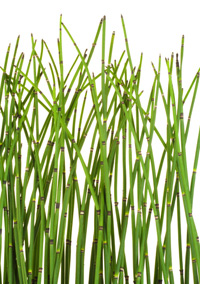
Horsetail (Equisetum arvense or E. hyemale)
What it does: Encourages strong hair and nails. Prevents hair loss, counteracts greasy hair. We use it in both hair and nail products. Also used to prevent wrinkles, and for chilblains and wounds. Used as a scouring powder in ancient timesWhat's in it: It is rich in the minerals silicon (10%), selenium, vitamin C, iron, niacin, potassium, and calcium. To a lesser extent, it contains vitamins A, E, pantothenic acid, B1 and B2. We use certified organic or grown in our own gardens without the use of chemicals.
Kaolin Clay
What it does: Dehydrating, astringentWhat's in it:
Lavender (Lavandula angustifolia or L. officinalis)
What it does: Balancing, heals scalp, counteracts dandruff. Antiseptic, anti bacterial and analgesic. Helps relieve headaches, insomnia, fatigue, muscle spasms, anxiety. Repels bugs, heals burns, wounds acne and eczema. Relaxes and soothes aching muscles.What's in it: We use certified organic or grown in our own gardens without the use of chemicals.
Lecithin
What it does: Lecithin is a superb emollient (softening and soothing agent), moisturizer (helps hydrate the skin) and antioxidant, which is why we use it in our Eye Cream, and why it has been used in fine regenerative creams for centuries. It can both deeply penetrate the skin, and carry other beneficial ingredients to the cells and the bloodstream, increasing the therapeutic value of the other ingredients. (Conversely, if lecithin is combined with "bad" ingredients, it would help them enter the cells more effectively as well. So when you see lecithin, it is important to note what it is combined with.)Lecithin is used in other products for many reasons. It has emulsifying, stabilizing, thickening, and suspending qualities, and is used in cooking, as a dietary supplement and for medicinal purposes.
One of the primary concerns that gives lecithin a poor rating on the Skin Deep Cosmetics Database has to do with it being put in an aerosol and inhaled. Herbaliz Eye Cream is "goopy" and in a little jar- no chance of inhalation. (Talc is getting a bad rap for the same reason. As long as it isn't dry or sprayed it's not "bad".) Another report on allergic reactions to lecithin turned out to be the result of a bleaching agent that was used on it. And then there's the animal product issue.
We use certified organic, non-gmo, food grade, liquid, unbleached lecithin made from sunflower, not soy.
What's in it: Lecithin contains phospholipids, iron, potassium, B vitamins, vitamin E, choline, linolenic acid. We use certified organic, non-gmo, food grade, liquid, unbleached lecithin made from sunflower, not soy.Lemon (Citrus limon)
What it does: Antihistamine, anti-inflammatory, antibacterial, reduces redness, antioxidantWhat's in it: high in vitamins A, B, and C We use certified organic only.
Lemon Balm (Melissa officinalis)
 What it does: Lemon balm has been proven to help heal minor skin irritations, relieve itching and redness. It is antibacterial, helping to speed healing and prevent infection. It is known to be antiviral, antioxidant, antihistamine, antispasmodic, antibacterial, and tranquilizing/sedative. It is reported to help lower blood pressure, ease headaches, and repel insects as well.
What it does: Lemon balm has been proven to help heal minor skin irritations, relieve itching and redness. It is antibacterial, helping to speed healing and prevent infection. It is known to be antiviral, antioxidant, antihistamine, antispasmodic, antibacterial, and tranquilizing/sedative. It is reported to help lower blood pressure, ease headaches, and repel insects as well. We use lemon balm in our Herbal Clay Mask for its skin soothing, antioxidant and astringent qualities. In our Herbal Bath Soaks and Bath Teas it soothes anxiety and nervous tension as well as calming both skin and muscles.
What's in it: Lemon balm contains flavonoids (antioxidants), polyphenols, tannins, volatile oils, and triterpenes. It contains eugenol, which kills bacteria and has been shown to calm muscles and tissues. We use certified organic or grown in our own gardens without the use of chemicals.
Marjoram (Origanum majorana)
What it does: Marjoram is often used to treat muscle aches and pains because it is analgesic and antispasmodic. We use it primarily for its relaxing properties to reduce stress and calm the nerves as well as the muscles. Marjoram is also anti-inflammatory, antibacterial and antioxidant.What's in it: Marjoram essential oil contains terpenes, linalool, terpineol, carvacrol, linalyl acetate, ocimene, cadinene, geranyl acetate, citral, eugenol. The herb contains high levels of beta-carotene, vitamin A, cryptoxanthin, lutein and zeaxanthin.

Mugwort (Artemisia vulgaris)
What it does: Mugwort has been used for centuries in sleep pillows to promote dreaming. We use it in both our Dreamy Sleep and Spirit Centering Sleep Dream Pillows to achieve exactly that effect. Other uses include decreasing external inflammation and repelling moths.What's in it: Bitters and flavonoids. We use certified organic or grown in our own gardens without chemicals.
Myrrh (Commiphora myrrha)
What it does: Athlete's foot, chapped and cracked skin, eczema, mature complexions, wounds, wrinkles. Anti-inflammatory, antimicrobial, antiseptic, astringent, cicatrizant, fungicidal, sedative, tonic.What's in it:
Nettle (Urtica dioica)
What it does: We use nettle in our Herbal Vinegar Hair Rinse, Hair & Scalp Oil Treatment, and Frizz Tamer because of its long standing reputation as a scalp stimulant, improving circulation and promoting abundant hair. Nettles have historically been used to prevent hair loss, reduce breakage, counteract dandruff and to make hair both soft and shiny. While we use it for hair, it is also beneficial to the liver, gallbladder and kidneys.What's in it: Nettle is rich in vitamins and minerals, including vitamins A, C, D and K; choline, lecithin, silica, iron, serotonin and tannins.
Olive Oil (Olea europaea)
What it does: For skin problems and for soaking nails to improve their strength. Burns, dermatitis, eczema, psoriasis, sensitive and chapped skin.What's in it:
Orange, Sweet (Citrus sinensis)
 What it does: We use sweet orange essential oil in our Tranquility aroma blend for its effects on the nervous system, which are calming and uplifting. Orange oil is antidepressant in nature, relieving emotional tension and stress, while helping clear and focus the mind. In Herbaliz Antibacterial Liquid Soap we use orange essential oil for its antibacterial, antiseptic and antiviral affects. A positive side effect of orange oil, no matter how you use it, is that it helps boost the immune system.
What it does: We use sweet orange essential oil in our Tranquility aroma blend for its effects on the nervous system, which are calming and uplifting. Orange oil is antidepressant in nature, relieving emotional tension and stress, while helping clear and focus the mind. In Herbaliz Antibacterial Liquid Soap we use orange essential oil for its antibacterial, antiseptic and antiviral affects. A positive side effect of orange oil, no matter how you use it, is that it helps boost the immune system. What's in it: Citrus oils are made from the fruit peel, and are cold pressed to extract the oil. (Most of the essential oils we use are steam distilled.) It contains mostly monoterpenes (antiseptic, antibacterial and antiviral), mainly limonene. We use certified organic only.
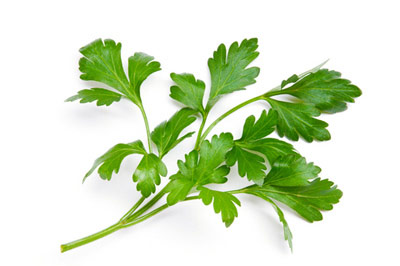
Parsley (Petroselinum sativum or P. cruspum)
What it does: We use parsley in our Herbal Vinegar Hair Rinse because it moisturizes and gives hair luster, enriching its color. It stimulates hair growth, soothes scalp inflammation and helps counteract dandruff. In general, parsley stimulates the immune system, tones blood vessels, arteries and capillaries.What's in it: Parsley is high in vitamins and antioxidants essential for protecting the hair and scalp from free radicals. It contains vitamins A, C, B complex, calcium, protein, and trace minerals. We use certified organic or parsley grown in our own gardens without chemicals.
Passion Flower (Passiflora incarnata)
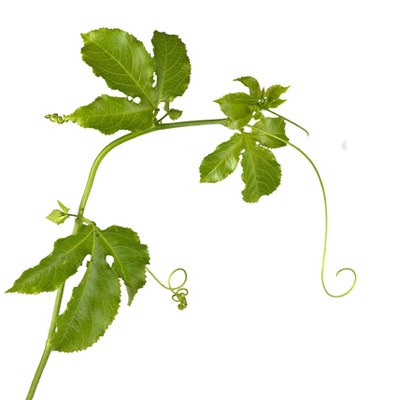 What it does: Passion flower encourages refreshing sleep for people who are upset, worried or overtired. It is known to relieve smooth muscle spasms and to be a very mild pain reliever. It can help reduce insomnia and tension, and can strengthen the nervous system. We use it in Sound Sleep Dream Pillows and Relaxing Bath Soaks for just that.
What it does: Passion flower encourages refreshing sleep for people who are upset, worried or overtired. It is known to relieve smooth muscle spasms and to be a very mild pain reliever. It can help reduce insomnia and tension, and can strengthen the nervous system. We use it in Sound Sleep Dream Pillows and Relaxing Bath Soaks for just that.What's in it: Calcium, vitamins A and C, flavonoids, magnesium, alkaloids, and tannin. We use certified organic only. Now that we are located in Alabama we have begun growing our own. So from 2013 forward, dream pillows may contain ours as well, which will not be certified but are grown without chemicals of any kind.
Patchouli (Pogostemon cablin)
What it does: Patchouli is helpful for balancing oily hair and skin, combating all kinds of skin and scalp issues. It is anti-inflammatory and antiseptic and generally healing. We use it in our Woodsy formulations of Shampoo, Moisturizers, and soaps. As a positive side effect, patchouli is antidepressant as well.What's in it: Patchouli alcohol, pogostol, bulnesol, nor patchoulenol, bulnese, patchoulene. We use certified organic steam distilled essential oil made from the dried leaves.
Peppermint (Mentha piperita)
 What it does: has pain blocking analgesic effects, as well as being anti-inflammatory and anti-spasmodic. It can be effectively used to relieve headaches and muscle spasms. It is cleansing for the body, soothing for the nervous system and digestion. Peppermint essential oil applied externally is good at stimulating circulation which can help maintain a healthy scalp. Like most essential oils, peppermint essential oil should always be diluted.
What it does: has pain blocking analgesic effects, as well as being anti-inflammatory and anti-spasmodic. It can be effectively used to relieve headaches and muscle spasms. It is cleansing for the body, soothing for the nervous system and digestion. Peppermint essential oil applied externally is good at stimulating circulation which can help maintain a healthy scalp. Like most essential oils, peppermint essential oil should always be diluted.What's in it: Contains Vitamins A, B complex, calcium, selenium, magnesium and other minerals. We use certified organic only.
Plantain (Plantago major)
 What it does: Plantain is approved by the German Commission E for topical use for skin inflammations. It is known to encourage healing, reduce inflammation and itching, and to help reverse allergic symptoms. It can be used for sunburn, windburn, rashes, or wounds, to soften, soothe and heal all kinds of skin conditions. Some say it minimizes scarring, similar to the effects of vitamin E and aloe.
What it does: Plantain is approved by the German Commission E for topical use for skin inflammations. It is known to encourage healing, reduce inflammation and itching, and to help reverse allergic symptoms. It can be used for sunburn, windburn, rashes, or wounds, to soften, soothe and heal all kinds of skin conditions. Some say it minimizes scarring, similar to the effects of vitamin E and aloe.What's in it: Plantain is high in beta carotene (A) and calcium. It also provides ascorbic acid (C), and vitamin K. Among the more notable chemicals found in plantain are allantoin, apigenin, aucubin, baicalein, linoleic acid, oleanolic acid, sorbitol, and tannin. We use certified organic or grown in our own gardens without the use of chemicals.
Rhassoul Clay
What it does: Studies have shown that Rhassoul clay can improve skin texture, reduce dryness, clarify the complexion, reduce flakiness and improve elasticity of the skin. On the surface, it removes oil and dead skin layers, smoothing the skin. Rhassoul clay comes from the Atlas Mountains of Morocco and has been used for facial care since at least ancient Roman and Egyptian times. It continues to be used in upscale spas around the world. We use it in our Herbal Clay Mask for your personal spa days.What's in it: Rhassoul clay is rich in trace minerals, containing silica, magnesium, aluminum, sodium, calcium and iron. Due to the high mineral content, Rhassoul appears to be more effective than other clays at cleansing, detoxification, and regular skin care. The minerals detoxify the skin by exchanging themselves for toxic metals and oily compounds.
Rosehip Seed Oil, Rosehip Powder (Rosa mosqueta, Rosa canina, Rosa spp.)
 What it does: helps to delay the effects of skin aging, assists with cell regeneration, and promotes collagen and elastin levels to increase. (smooths facial lines and wrinkles) Used for Stretch marks, UV damage from overexposure to the sun, Scars from surgery, burns, and acne, Eczema, Psoriasis, wrinkles, and premature skin aging, hyper-pigmentation, dermatitis, burns, including those from radiation and sunburns, age spots, brittle nails, dry and damaged hair. Improves cell membrane, boosts immune system, promotes tissue growth.
What it does: helps to delay the effects of skin aging, assists with cell regeneration, and promotes collagen and elastin levels to increase. (smooths facial lines and wrinkles) Used for Stretch marks, UV damage from overexposure to the sun, Scars from surgery, burns, and acne, Eczema, Psoriasis, wrinkles, and premature skin aging, hyper-pigmentation, dermatitis, burns, including those from radiation and sunburns, age spots, brittle nails, dry and damaged hair. Improves cell membrane, boosts immune system, promotes tissue growth.What's in it: carotenoids, vitamins A and C, a high amount of essential fatty acids and Vitamin E, In particular, it is rich in linoleic and linolenic acids, which are important skin nutrients. Also contain calcium, iron, selenium, B complex vitamins and trace minerals. We use virgin (unrefined) certified organic only.

Rosemary (Rosmarinus officinalis)
What it does: Stimulates hair growth, stimulates scalp, vs dandruffWhat's in it: We use certified organic or grown in our own gardens without the use of chemicals.
Rosewood (Aniba rosaeodora)
Rosewood is now endangered. We are gradually removing it from our products as we use up our inventory of the oil. Like Sandalwood, this wood will be greatly missed. Please be conscious of the need to replace that which we take from the earth.Sage (Salvia officinalis)
 What it does: We use sage in all our hair care products because it promotes hair growth, counteracts dandruff, and reduces hair loss. It even helps reduce oily hair without being drying because it is gently astringent. We use the dried herb in our Stimulating Bath Soak and Bath Tea because it is relaxing to the nervous system while stimulating circulation. Herbaliz Backache Relief Oil contains sage essential oil primarily for its anti-spasmodic and anti-inflammatory qualities. In addition, sage is antibacterial, antifungal, antimicrobial, antioxidant, antiseptic, and tonic. It helps improve memory, calm the nerves, encourage healing and purify the air.
What it does: We use sage in all our hair care products because it promotes hair growth, counteracts dandruff, and reduces hair loss. It even helps reduce oily hair without being drying because it is gently astringent. We use the dried herb in our Stimulating Bath Soak and Bath Tea because it is relaxing to the nervous system while stimulating circulation. Herbaliz Backache Relief Oil contains sage essential oil primarily for its anti-spasmodic and anti-inflammatory qualities. In addition, sage is antibacterial, antifungal, antimicrobial, antioxidant, antiseptic, and tonic. It helps improve memory, calm the nerves, encourage healing and purify the air. What's in it: Sage contains calcium, potassium, zinc, magnesium, iron, niacin, vitamin A, B1, B2 and B complex, volatile oils (including thujone, cineole, borneol, linalool, camphors, salvene, pinine), salvin and carnosic acid, flavonoids, phenolic acids, rosmarinic acid, tannins, A-thujone, B-thujone, camphor, cineol. We use certified organic or grown in our own gardens without the use of chemicals.
Santolina (Santolina chamaecyparissus)
 What it does: Also known as lavender cotton, it is not related to lavender at all. We use dried santolina in our Gentle Sleep Dream Pillows for its muscle relaxing qualities and sweet scent. Positive side effect: it repels insects.
What it does: Also known as lavender cotton, it is not related to lavender at all. We use dried santolina in our Gentle Sleep Dream Pillows for its muscle relaxing qualities and sweet scent. Positive side effect: it repels insects. What's in it: Santolinenone. We use certified organic or grown in our own gardens without the use of chemicals.
Shea Butter (Butyrospermum parkii)
What it does: Shea butter is an excellent moisturizer, tissue healer and regenerator, and hair moisturizer.What's in it: We use a certified organic unrefined shea butter from Ghana.
Strawberry Leaf (Fragaria vesca)
What it does: Strawberry leaf helps with all kinds of skin problems including rashes and eczema. We use it in our Herbal Vinegar Toner for its astringent, antibacterial and antioxidant properties.What's in it: Strawberry leaves contain tannins, antioxidant flavonoids, ascorbic acid (Vitamin C- also an antioxidant), and a tiny amount of essential oil. We use certified organic only.
Sunflower Seed Oil (Helianthus annuus)
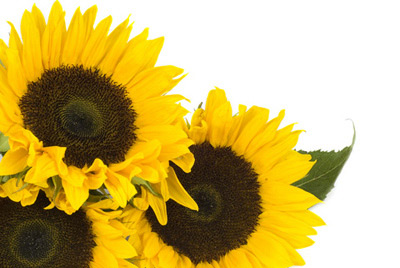 What it does: Sunflower oil is lightweight and easily absorbed into the skin. It smooths, softens and moisturizes skin and is excellent for all skin types, but especially for dry, weathered, aged, and damaged skin.
What it does: Sunflower oil is lightweight and easily absorbed into the skin. It smooths, softens and moisturizes skin and is excellent for all skin types, but especially for dry, weathered, aged, and damaged skin. What's in it: It supplies more Vitamin E than any other vegetable oil and contains vitamins A and D. Sunflower is not a genetically modified plant (non-GMO) and allergic reactions to it are very rare, two more reasons for our choice. We use certified organic, cold pressed, high oleic sunflower oil only. We select high oleic because of the added stability it brings. Whenever it's available we choose virgin oil for maximum nourishment value.

Thyme (Thymus vulgaris)
What it does: Vs dermatitisWhat's in it: We use certified organic or grown in our own gardens without the use of chemicals.
Vegetable Emulsifying Wax
What it does: Emulsifying wax is used to blend our creams and lotions which contain both oil and water. Its ability to bind oil and water is unparalleled, keeping the two from separating, which is their nature. It does this while providing a desirable consistency and texture, without leaving a greasy film on the skin (the way beeswax does). Emulsifying wax is suitable for most skin types as allergic reaction and skin sensitivities have rarely been recorded. It earns a "4" on the cosmetics database rating scale primarily because of the variety of substances from which it can be made (which are not disclosed by its name), and because of its manufactured nature. It cannot be considered natural, despite its plant origins.What's in it: Ours is derived from cetostearyl alcohol, and ethoxylated sorbitan ester, which are extracted from plant fats. (So it may have started with plants, but it goes through at least two levels of manufactured changes.) This particular emulsifying wax is NF (National Formulary) approved and is the global choice for emulsifying compounds. So as far as we know it is the best choice for a non-greasy, non-toxic lotion. We will keep looking for something better. If you know of a truly natural emulsifier that performs this well, contact us right away!
Vetiver (Vetiveria zizanioides)
What it does: Scalp healingWhat's in it:
Vitamin E (tocopherols)
What it does: We use small amounts of Vitamin E in our lotions and creams as a preservative and anti-oxidant.What's in it: Made from soybeans, we use a vacuum distilled, unrefined Vitamin E oil that has been verified and tested GMO free from crop to finished material. It is also Kosher Certified. The vitamin E we use is "natural mixed tocopherols". We do not use tocopheryl acetate, synthetic or semi-synthetic "natural source" vitamin E.

Yarrow (Achillea millefolium)
What it does: Promotes hair growth, slows hair loss, improves circulation.What's in it: Potassium, phosphorous, B complex vitamins, magnesium, manganese, selenium, silicon. Small amounts of other vitamins and minerals.
All material provided on this website is provided for informational or educational purposes only, and is not intended as a substitute for the advice provided by your healthcare professional or physician.
